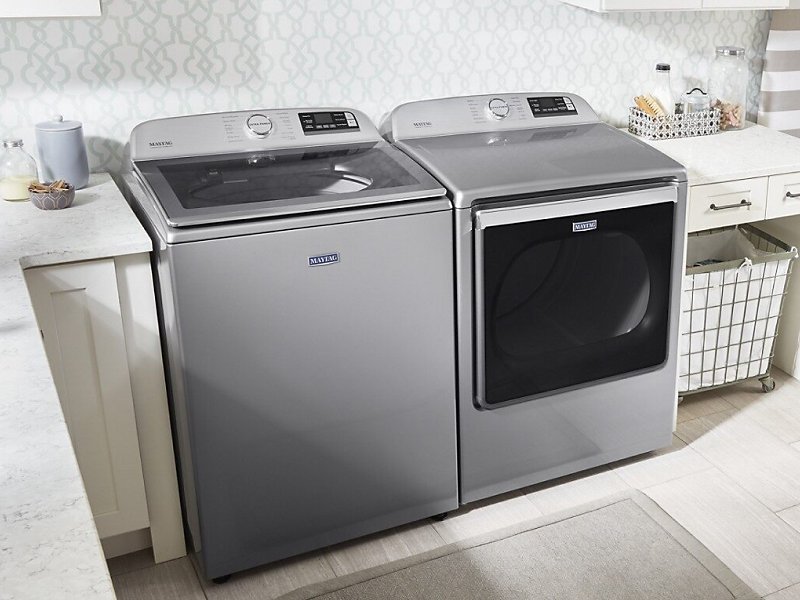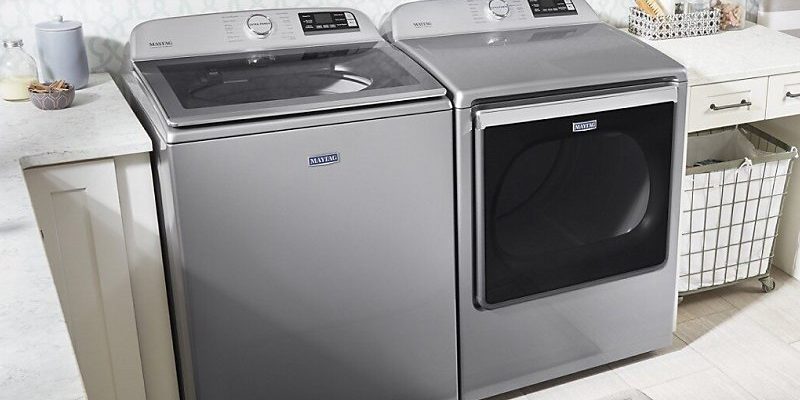
Let’s break it down together, like two friends puzzling over a board game manual. The Maytag warranty isn’t just a piece of paper—it’s a promise: certain problems that crop up with your new kitchen gadgets are Maytag’s responsibility, not yours. But what does that mean in real life? What’s under that protective umbrella, and what falls outside in the land of “sorry, not covered”? Let’s take a close look at what you can expect from a Maytag kitchen appliance warranty, how it works, and how to get the most out of it.
What Types of Maytag Kitchen Appliances Are Covered?
So, you might be wondering—does “kitchen appliances” mean *everything* in your kitchen, or only certain items? Here’s the thing: the Maytag kitchen appliances warranty usually covers the big-ticket items you’re likely to use every day. Think of the core lineup:
- Refrigerators (including French door, top-freezer, side-by-side, and more)
- Dishwashers (both built-in and portable models)
- Ranges, Ovens, and Cooktops (gas, electric, and induction)
- Microwaves (over-the-range and some countertop models)
- Range Hoods
Most small appliances—like blenders or countertop mixers—aren’t included under the standard kitchen appliance warranty. Maytag’s warranty is designed for the machines that become fixtures in your kitchen, the ones you’d need help moving if you ever changed apartments.
When you buy a Maytag kitchen appliance new from an authorized retailer, that warranty automatically comes with it, no extra code, registration, or handshake required (though it never hurts to keep that purchase receipt handy). If you bought a used or refurbished Maytag, coverage can be a little more complicated—usually, warranties don’t transfer between owners.
What Does the Standard Maytag Warranty Actually Cover?
Now let’s talk about what’s *under the hood* of your Maytag kitchen appliances warranty. At its core, the standard warranty is all about fixing or replacing parts that fail due to manufacturing defects. Think of it like a builder’s guarantee: if something inside the machine wasn’t put together properly, Maytag will set it right.
Here’s what’s typically covered during the first year after purchase:
- Parts and labor for repairing or replacing defective components (like a failed compressor in your fridge, a shorted-out control board in your oven, or a leaky dishwasher seal)
- Service calls from authorized repair technicians (no need to hunt down a random repair shop or try risky DIY code resets)
- Replacement of faulty units in rare cases where repairs aren’t possible
This means if your appliance stops working because of a manufacturing error—say, a relay switch fails in your dishwasher, or the fridge’s controls won’t sync up anymore—Maytag eats those costs.
But—and this is important—accidental damage, misuse, or problems caused by failing to follow the manual aren’t covered. In other words, if your microwave’s turntable won’t spin because you tried to reset it by force, that’s probably on you.
How Long Does Maytag Warranty Coverage Last?
Warranty coverage isn’t one-size-fits-all, and it definitely isn’t forever. The main coverage for Maytag kitchen appliances is:
- 1 year, parts and labor—this is the all-in-one safety net for manufacturing defects.
For some models and major components, Maytag offers extended coverage:
- 5-10 years on certain sealed systems (think: refrigerator compressors, evaporators, or major dishwasher tub components). This means Maytag will pay for the part, but you may have to cover labor costs once the first year passes.
- Limited lifetime coverage for select components (these are rare, but you’ll see them advertised on high-end models).
Let me explain with a real-life example. Suppose the compressor in your Maytag fridge croaks after three years. If your model advertises a 10-year compressor warranty, Maytag will provide the replacement part. But after the initial one-year window, you could be on the hook for labor, troubleshooting, and any code resets the technician has to perform.
It’s worth checking your specific owner’s manual or warranty booklet, since different models sometimes have slightly different terms. Honestly, it’s never a bad idea to stash those documents in a kitchen drawer—you’ll thank yourself later.
What Isn’t Covered by the Maytag Kitchen Appliances Warranty?
Here’s where things get a little tricky. The Maytag warranty is solid, but it doesn’t cover every possible scenario. Imagine it like an umbrella—it keeps you dry in most storms, but there are a few places the rain can sneak in.
Here are the top things not covered:
- Accidental damage (like dropping a heavy pan and cracking your cooktop glass)
- Wear and tear (normal fading, scratches, or the gradual decline of things like oven racks or shelves)
- Cosmetic issues that don’t affect how the appliance works
- Improper installation (if the person who installed your range missed a key code or didn’t sync the parts correctly)
- Problems caused by using non-Maytag parts or accessories (universal remotes or after-market batteries, for example)
- Routine maintenance, cleaning, or code updates
- Damage following natural disasters, power surges, or “acts of God”
Let’s say your dishwasher stops draining, but the root cause is a spoon wedged in the pump, not a factory defect. Maytag’s warranty won’t cover the repair—or the cost of a technician’s visit—for that sort of troubleshooting.
Pro Insight: Double-check your warranty booklet for a clear, updated list of exclusions. Policies can shift over time, and the little details matter.
How Do You Make a Maytag Warranty Claim?
So your Maytag dishwasher is on the fritz, and you want some help. Filing a warranty claim might sound intimidating, but it’s usually pretty straightforward if you’ve got your paperwork lined up.
Here’s how the process works, step by step:
- Find your proof of purchase—Maytag (or the authorized service center) will usually ask for a copy of your original receipt, so keep it handy.
- Locate your model and serial number—typically on a sticker inside the door or on the back of the appliance. This is like the appliance’s fingerprint, and it helps match you to the right warranty terms.
- Call Maytag’s customer service or visit their official website to start a service request. They might walk you through some basic troubleshooting or reset steps to confirm the problem.
- Schedule a service appointment with an authorized technician if needed. Maytag covers the cost for eligible repairs during the warranty window.
You’ll want to be as specific as possible when describing the issue—does your oven fail to sync with the timer, or is there a code flashing on your dishwasher display? Details help the service team diagnose and speed things along.
If you try to repair the appliance yourself, use after-market parts, or ignore clear safety codes in the manual, you could void your warranty—so let the pros handle it.
Are There Extended Warranties or Protection Plans Worth Considering?
One of the classic “upsells” at appliance stores is the extended warranty or protection plan. Should you bother? Well, it depends on your risk comfort and how much you rely on your Maytag appliances.
An extended warranty from Maytag or a third party adds coverage beyond that first year, sometimes including parts, labor, and extra perks like food spoilage compensation or priority service. These can be useful if you want peace of mind, especially for high-end models with lots of electronics and sensors.
But here’s the thing: Maytag appliances are known for durability, so some people skip extra plans and just set aside a little “repair fund.” If your home insurance or credit card already offers some appliance coverage, adding another layer might feel redundant.
- If you have a history of appliance troubles or live far from repair centers, a protection plan makes sense.
- If you’re handy or don’t mind the occasional troubleshooting, you might be fine with the built-in warranty.
Just make sure you understand *exactly* what the extra plan covers—batteries, remotes, code resets, and troubleshooting calls aren’t always included.
Pro Tips for Keeping Your Maytag Warranty Valid
Nothing’s worse than learning your claim was denied because of a technicality. To keep your Maytag kitchen appliances warranty valid, here are a few habits worth building:
- Register your appliance online—not always required, but it makes claims faster and proves ownership.
- Follow the manual for installation, use, and maintenance. If a step says to sync or pair a remote, do it just as described.
- Avoid DIY repairs or swapping in universal or non-Maytag parts.
- Keep records of every service visit, troubleshooting call, and code update.
For example, if your range starts flashing a cryptic error code, take a quick photo and call customer service before poking around inside. You’d be surprised how often a quick reset, following official instructions, fixes things without risking your warranty.
Maytag’s official line: “Improper maintenance or unauthorized repairs can void coverage.” Translation: when in doubt, call before you DIY!
How Does Maytag’s Warranty Compare to Other Brands?
When you’re shopping for new appliances, it helps to know how Maytag stacks up against other big names, like Whirlpool, GE, or LG. Here’s the real talk: Maytag’s standard warranty—one year on parts and labor, with longer coverage on select components—is pretty typical for the industry.
Some brands offer slightly longer or more inclusive coverage, but those perks often come with a higher price tag. For example:
- Whirlpool (Maytag’s parent company) offers similar warranty periods and terms—basically twins in the appliance world.
- Samsung and LG sometimes boast a bit longer coverage for electronics and sealed systems, but require stricter registration and proof-of-purchase steps.
- GE is about on par, though its premium “Café” line sometimes comes with extra perks.
Universal appliance warranties or third-party protection plans exist, but they can be hit or miss—especially around troubleshooting and code reset issues. Sticking with the brand warranty keeps things simple and, honestly, tends to result in faster, smoother repairs.
Final Thoughts: Making the Most of Your Maytag Warranty
Navigating any appliance warranty can feel like reading a dense instruction manual: lots of details, a few head-scratchers, and some fine print you’ll want to bookmark. But at heart, the Maytag kitchen appliances warranty is all about peace of mind. It covers the big stuff—major mechanical and electrical failures from the factory—so you don’t get stuck footing the bill for something you never caused.
The best way to make the warranty work for you? Keep those receipts, follow the manual, and call for help if you’re ever unsure. Remember, that safety net is only as good as you let it be—don’t be afraid to use it if something breaks down, won’t sync, or flashes a cryptic code. The sooner you act, the faster Maytag can get you back to cooking, cleaning, and enjoying your kitchen—worry-free.
